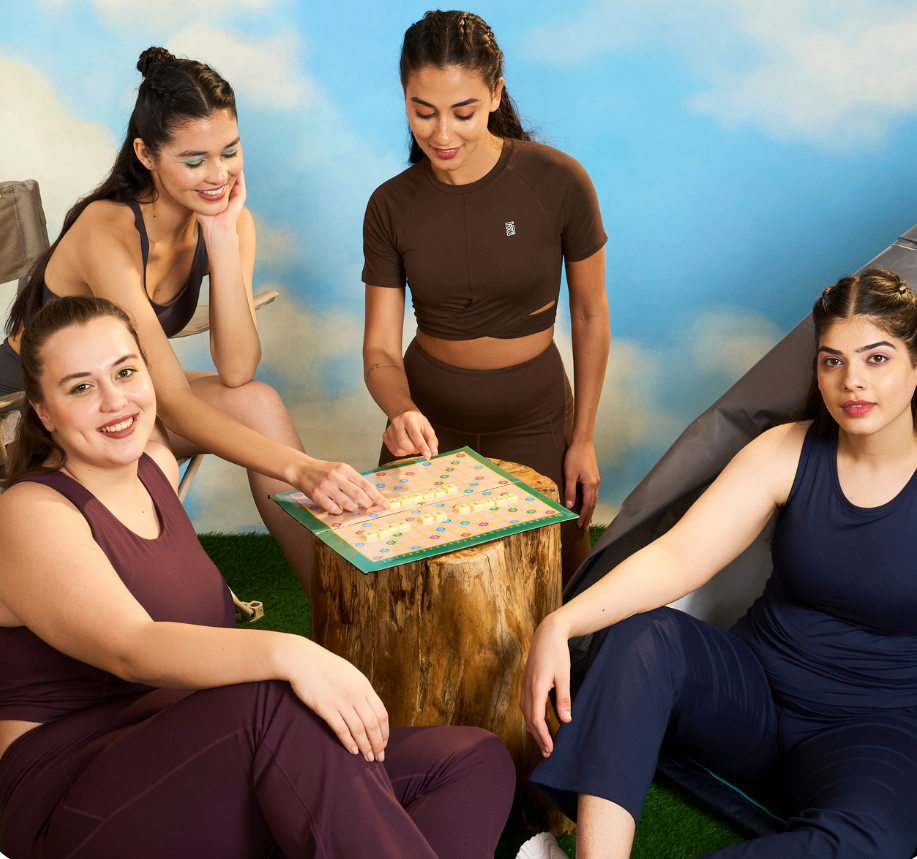Compression vs. Loose Fit: What’s Better for Your Workout?
When it comes to workout clothing in the gym, there is a constant debate: compression vs. loose fit exercise clothing, which is superior for working out? Do you opt for tight-fitting compression clothing that promises to enhance performance, or is loose fit more comfortable and the ideal choice? The reality is, both are suitable for your exercise wardrobe, based on your exercise goals, comfort, and style of exercise.
If you've ever stood staring at your gym wear, questioning whether compression clothing pros are worth the restriction of loose fit workout clothing benefits, you're in the right location. Let's demystify so you can make the informed decision for your next sweat session!
What is Compression Wear?
Compression clothing is fitted to fit close to your body, holding your muscles and enhancing blood flow while exercising. The principle behind compression clothing for exercise is that it provides gentle pressure on your muscles, dampening vibration and improving blood flow. This can help minimize muscle fatigue and enhance recovery.
Popular Types of Compression Clothing:
-
Compression leggings – Best for runners, weightlifters, and HIIT athletes.
-
Compression shirts – Used by athletes for upper-body exercises.
-
Compression socks – Enhance circulation and lower swelling.
-
Compression shorts – Provide support for high-impact activities.
What is Loose Fit Activewear?
Loose fit workout clothing benefits, on the contrary, consist of comfort, air permeability, and freedom of movement. These garments provide free passage of air, avoiding overheating and offering maximum flexibility. Loose fit activewear such as loose fitting gym pants and loose leggings for women are the perfect alternative if you need relaxed, carefree gym wear.
Common Types of Loose Fit Gym Wear
-
Sweatpants & joggers – Ideal for strength training or everyday workouts.
-
Oversized t-shirts – Provide unrestricted movement and improved ventilation.
-
Loose-fitting tank tops – Ideal for high-sweat sports such as CrossFit.
Advantages of Compression Wear during Workouts
1. Improved Performance & Muscle Support
One of the largest compression clothing advantages is muscle support. Research indicates that compression wear for exercise can enhance stability and endurance, making it perfect for high-intensity exercises.
2. Muscle Recovery and Compression Clothing
Compression clothing isn't all about performance; it's recovery-friendly too. It decreases post-workout soreness by stimulating circulation, thereby flushing out the lactic acid accumulation.
3. Moisture-Wicking & Sweat Management
Ever worked out and been soaking wet with sweat? Top-rated compression clothing for high-intensity training is crafted from moisture-wicking fabrics that draw sweat away from your body to keep you dry and comfy.
4. Compression vs. Loose Fit for Yoga Sessions
For yoga or pilates, compression leggings offer muscle support, yet can be restrictive for others. If you enjoy a tight feel that holds everything in place, use compression. Alternatively, loose fit activewear can be ideal for greater flexibility.
Benefits of Loose Fit Activewear in Workouts
1. Maximum Comfort & Freedom of Movement
If you detest being constricted, loose fit exercise wear such as loose leggings for women is your way to go. It provides a comfortable fit that enables free movement, making it perfect for exercises such as yoga, stretching, and bodyweight training. In addition to that, a comfortable and vibrant fitness gear can also boost your workout motivation.
2. Ideal for Flexibility-Based Exercises
Questioning, are loose fit garments more suitable for flexibility exercises? Yes! If you must move freely without the constraint of tight clothing, loose fit exercise wear benefits excel here.
3. Breathability & Sweat Evaporation
Loose-fit wear offers a greater air flow, avoiding heat buildup in warm conditions. More airflow makes them suitable for outdoor exercise and long-duration training sessions.
4. Loose Fit vs. Compression for Weight Training
Loose fit activewear facilitates greater range of motion when weight training, but some weightlifters favor compression clothing for muscle support. If you perform heavy lifting, compression shorts assist in reducing muscle fatigue better than loose fitting gym pants.
Compression vs. Loose Fit for Various Types of Workouts
|
Workout Type |
Best Choice |
Why? |
|
High-Intensity Training |
Compression Gear |
Supports muscles, improves circulation. |
|
Yoga & Stretching |
Loose Fit |
Allows more flexibility and breathability. |
|
Running & Cardio |
Compression Gear |
Reduces muscle fatigue, wicks sweat. |
|
Weightlifting |
Loose Fit |
Allows better range of motion. |
|
Recovery Days |
Loose Fit |
More comfort, better airflow. |
Things to Keep in Mind When Deciding Between Compression & Loose Fit
1. Body Type & Comfort Preferences
Some individuals feel more secure in compression gear, while others like the ease of loose fit activewear.
2. Workout Type & Intensity
High-intensity training? Compression wear advantages include enhanced performance and muscle recovery.
Flexibility stretching? Loose fit workout apparel benefits make it the better option.
3. Weather Conditions
Warm weather → Loose fit athletic wear for improved air flow.
Cold weather → Compression wear for insulation and muscle stability.
Final Verdict
There isn't a one-size-fits-all solution to the compression vs. loose fit workout wear debate. It really depends on your type of workout, your comfort level, and your fitness objectives. Experiment with both and determine what is best for you!
So, are you Team Compression or Team Loose Fit? Let us know in the comments below or stack up your cart with the best of both the worlds at Hunnit!
FAQs
Q: Does compression wear enhance athletic performance?
A: Yes! The advantages of compression clothing include muscle support, improved circulation, and less fatigue.
Q: Are loose fit garments better suited for flexibility exercises?
A: Definitely! Loose fit exercise garments benefits include more freedom of movement and comfort while stretching.
Q: Is compression or loose fit better for weightlifting?
A: It depends! Exercise compression gear offers support, while loose fit exercise wear offers a greater range of motion.
Q: Should I wear compression when working out?
A: It depends on your workout. Compression gear is great for high-intensity and endurance workouts, providing muscle support and reducing fatigue.
Q: Is it better to work out in tight or loose clothing?
A: It depends on your preference and workout type. Compression gear enhances performance and support, while loose fit offers comfort and breathability.
Q: Does compression shape your body?
A: Compression clothing can provide a sculpted look while wearing it, but it does not permanently alter body shape.



